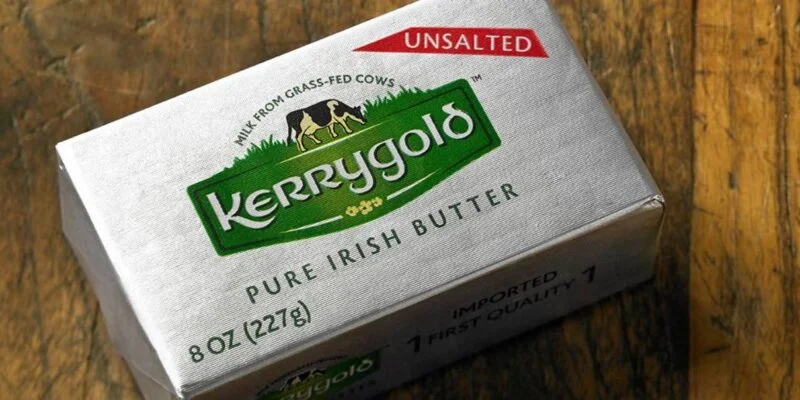New testing finds evidence of “forever chemicals” in the wrappers of eight brands of butter.
Wrappers from eight brands of butter have detectable levels of total fluorine, an indicator of the group of chemicals known as PFAS, according to a new report from Mamavation.
Partnering with EHN.org, the environmental
wellness blog and community had 32 wrappers from 22 brands tested by a U.S.
Environmental Protection Agency-certified lab and found levels of total
fluorine ranging from 11 parts per million to 112 ppm in 16 of the wrappers.
Fluorine is a strong indicator of “forever
chemicals”— which have been linked to everything from cancer to birth defects to lower vaccine effectiveness.
EHN.org partially funded the testing and
Pete Myers, chief scientist of Environmental Health Sciences, which publishes
Environmental Health News, reviewed the findings. The report builds on EHN.org
and Mamavation’s growing library of consumer
products tested for evidence of PFAS, including products such as contact lenses, pasta and tomato sauces, sports bras, tampons, dental floss and electrolytes.
While many are aware of PFAS pollution in water, the testing finds that we’re also exposed by the things we wear or eat. You can explore more reporting from our collaboration with Mamavation: "PFAS on our shelves and in our bodies.”
Linda S. Birnbaum, scientist emeritus and
former director of the National Institute of Environmental Health Sciences and
National Toxicology Program and scholar at residence at Duke University, told
Mamavation of the new findings: “It’s disappointing to see indications of PFAS
in butter wrappers. In order to protect the public, PFAS should not be present
in food packaging like butter wrappers. This is an important issue to tackle in
the future in order to protect pregnant women and children from the potential pitfalls
of PFAS. I highly recommend the industry fix this problem as soon as possible.”
Can PFAS get from packaging into our food?
PFAS have previously been found in food
packaging such as pizza boxes, sandwich wrappers, French fry
containers and popcorn bags due to their water- and
oil-proof qualities.
Terrence Collins, Teresa Heinz professor of
green chemistry & director of the Institute for Green Sciences at Carnegie
Mellon University, told Mamavation that “the U.S. Food and Drug Administration
has known for decades that PFAS compounds in food wraps can migrate into our
food.”
People who eat more takeout, fast food and
pizza often have higher levels of PFAS in their bodies than people who
regularly cook at home, according to a 2019 study.
“Those eight out of 22 butter brands still using PFAS found by Mamavation in their wraps should come to terms with the serious PFAS health threats … and get rid of PFAS compounds altogether in every aspect of their business,” Collins added.
What butter brands are PFAS-free?
Mamavation sent 32 butter wrappers from 22
brands for testing and half of the wrappers (from eight of the brands) had
indications of PFAS. Some products were tested more than once and the results
varied.
These brands had detectable levels of total
fluorine: HEB Organic, Kate’s, Kerrygold, Kirkland, Maple Hill Organic,
Miyokos, Organic Valley and Wegmans.
Mamvation also highlighted brands that had
butter wrappers free from PFAS evidence, including 365 Whole Foods, Clover
Sonoma, Horizon Organic, Nature’s Promise, Straus Family, Trader Joe’s and others.
See the full report at Mamavation.
The testing is part of an ongoing effort by
Mamavation and EHN.org to identify PFAS in common consumer products. Follow our
PFAS testing project with Mamavationat the series landing page.
Want to know more about PFAS? Check out
our comprehensive guide.
